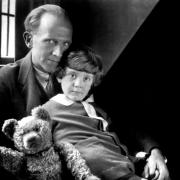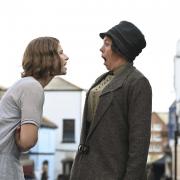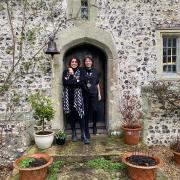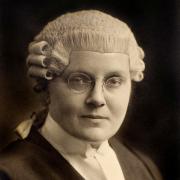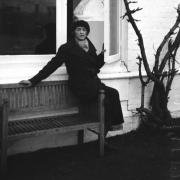Sussex was very much on the frontline during World War II, playing a key role in the Battle of Britain and hosting large numbers of British and Canadian troops

May’s VE Day commemorations came and went this year as we focused on our real and present battle with COVID-19.
But the huge efforts being made by medical staff and scientists to halt the spread of the virus remind us of the great fight our ancestors faced during World War II, which ended 75 years ago this year.
The most destructive war in human history cost a conservative estimate of 60 million lives and lasted a full six years from the German invasion of Poland (1 September 1939) to the final signing of Japanese peace terms (2 September 1945). But what did it all mean for Sussex?
The summer of 1940 was a nervous time for the county as a German invasion of Britain was a very real possibility after France had fallen. When you learn the Germans had invasion plans that went right into the county’s detail, including its square mileage (East Sussex 780.69 and West Sussex 628.00) and road mileage (East Sussex 1,535.95 and West Sussex 1,265.92) you appreciate how serious they were.
The accuracy of it, including identification of south-east England as a prime landing spot where “the South Downs come to an end at Eastbourne ... the coastline … flat until the central hills meet the sea at Hastings” rather sends a shiver down the spine.
Of course, it was the RAF’s refusal to bow in the Battle of Britain and then our defiance in the face of the Blitz that meant Operation Sealion (or Sea Lion) was only ever realised on paper.
There was the so-called ‘coastal crust’, a bristling array of pillboxes, machine gun posts, trenches, rifle posts, anti-tank obstacles, scaffolding, mines, and barbed wire, that would hopefully impede, if not prevent, any invasion. Relics of Sussex’s preparedness remain, such as at Bishopstone railway station where two pillboxes were added to the station building’s roof in 1940.

As Sussex regiments were posted overseas, defence fell to the Home Guard and then the First Canadian Army (from early 1944). Defensibility was earnest. The Germans had identified not just Eastbourne, but also Camber Sands, Winchelsea, Bexhill, and Cuckmere Haven, as places where they’d potentially make landfall.
Sussex was very much on the frontline. Its airfields, such as RAF Tangmere and RAF Westhampnett, would play a critical role during the Battle of Britain and after, whilst its towns, particularly Eastbourne, were among the most pummelled in the south-east.
The county also changed markedly in character as it was garrisoned by British and Canadian units (1940-42) with another massive build-up occurring in the lead-up to D-Day as personnel and materiel swarmed in, with landing craft and Mulberry Harbours being assembled off the coast. Worthing was home to several Allied divisions as D-Day loomed ever closer.
Army camps would pop up everywhere. Five new airfields were built in the approach to D-Day, four of them near Chichester, and the other near Billingshurst. Large numbers of Canadians were stationed at Newhaven, and it was largely from here that the Ill-fated Dieppe Raid (1942) was launched.
It may surprise some that Gatwick, opened as a commercial airfield in the late 1920s, was requisitioned by the Air Ministry and became a wartime base for RAF night-fighters, as well as a site for repairs and maintenance.
With the fall of France in 1940, RAF units withdrew to Gatwick from across the Channel and later in the war (1942) the airfield began receiving RAF and USAAF bombers that were either damaged or short of fuel. RAF Gatwick was finally decommissioned in 1946.
RAF Westhampnett, near Chichester, was built as an emergency landing airfield for fighters and was a satellite station to RAF Tangmere, which played a notable role during the Battle of Britain. WW2 fighter aces Wing Commander Douglas Bader, and Johnnie Johnson, were stationed here in 1941.

More: Read about 6 culinary pioneers and how they made Sussex their home
While the fighting continued in the skies, communities were affected in subtler ways. Bexhill saw its school evacuated as the town suffered substantial bomb damage.
Eastbourne, conversely, saw children evacuated to the town to begin with, in the belief it would be safer, but they had to be evacuated again after France fell, as Sussex was expected to be in a German invasion zone.
The German invasion plan, of course, envisaged landings at Eastbourne. Many took the subliminal hint, shut up their houses, and headed inland. Private boarding schools were mothballed and hotels closed due to the restrictions on visitors, the empty buildings soon taken over by the armed services.
The locals may have moved out, but thousands of others took their place. There were Canadians billeted in Eastbourne from 1941. The town suffered badly from bombing, with many Victorian and Edwardian buildings damaged or destroyed. Eastbourne became reputedly the most raided town in the south-east with the period between May 1942 and June 1943 being worst.
The borough lost 187 civilians during the war and a memorial to them was unveiled at the old Wish Tower in 2018. Sussex’s single-worst incident though hit East Grinstead on 9 July 1943, when a lone raider dropped eight bombs, including on a packed Whitehall Cinema. There were 108 fatalities with 235 injured.
Eastbourne Pier became a casualty but not through enemy action. Part of the decking was removed, and machine guns installed in the theatre, to repel any attempted landing.
A Bofors anti-aircraft gun was also sited midway along the pier. In December 1942 an exploding mine caused much damage to the pier and nearby hotels, and the following year a detachment of Royal Canadian Engineers laid camouflage netting over the pier’s stanchions so a flotilla of landing craft could be concealed.
As the war headed towards its conclusion, Eastbourne Redoubt, a Napoleonic-era fort, was re-armed. Having already been requisitioned by the Army for storage, it now had anti-aircraft guns mounted on its old gun platforms, to counter the new threat of German V-1s.
At nearby Beachy Head, the RAF established a forward relay station to improve radio comms with aircraft, whilst there was also an important wartime radar station in the area, as well as another at Pevensey.
Sussex was also the setting for some of the activities of Churchill’s Ministry of Ungentlemanly Warfare. It was a case of fighting fire with fire. Bignor Manor, half-a-dozen miles north of Arundel, became a safe house for Free French agents, with nearby Tangmere Airfield being used to fly men and women of the Resistance into and out of Nazi-occupied France between 1942-44.
As Churchill himself said to cheering crowds on VE Day: “God bless you all. This is your victory! It is the victory of the cause of freedom in every land. In all our long history we have never seen a greater day than this.”
Let us continue to use that freedom wisely and respectfully. It was hard won. He also said: “Everyone, man or woman, has done their best. Everyone has tried.” It was as true of Sussex as anywhere.
From withstanding bombing to taking in evacuees, being evacuated, and providing a base for the fight back, it was undoubtedly one of Sussex’s finest hours.
CHRONOLOGY
1939 – Germany invades Poland (1 Sep), Britain declares war on Germany (3 Sep).
1939 – Evacuees arrive in Sussex in their thousands, e.g. 13,000 in Chichester (Sep).
1940 – Evacuation from Dunkirk (May/Jun), Battle of Britain and start of the Blitz.
1940 – Bishopstone station acquires its pillboxes.
1941 – Germany attacks Russia (June) and Japan attacks the US (Dec).
1941 – Douglas Bader and Johnnie Johnson stationed at Tangmere.
1942 – 1st major British victory of the war, 2nd El Alamein (Oct/Nov).
1942 – Dieppe Raid launched from Newhaven. Heaviest bombing of Eastbourne begins.
1943 – Russians defeat the Germans at Stalingrad on the Eastern Front.
1943 – Air attack on E. Grinstead (9th July) leaves over 100 dead.
1944 – D-Day (Jun), sees the Allies open the 2nd Front. Battle of Monte Cassino (Italy).
1944 – Last of Free French agents fly out of Tangmere.
1945 – German surrender and VE Day (8 May). Japanese surrender and VJ Day (15 Aug).
1945 – Good old Sussex by the Sea! rings out on VE-Day, e.g. in Arundel (8 May).
ELSEWHERE IN SUSSEX
- At Bognor, local children and holidaymakers helped fill sandbags to protect buildings from bombs.
- Worthing received 12,000 evacuees as part of Operation Pied Piper in September 1939.
- Fishbourne artist Vivienne Corby had her ‘child’s-eye’ pictures of the war in the Daily Mail.
- Sussex fishermen and boat-owners helped rescue the British Expeditionary Force from Dunkirk.
- 26 Home Guard battalions were formed in Sussex. Over 1,000 enlist in Worthing in three days.
- The Royal Observer Corp’s No. 2 Group had its Ops Room and HQ in Denne Rd, Horsham.
- Bungalow Town (Shoreham Beach) was destroyed to make way for anti-invasion measures.
- First meeting of Winston Churchill and ‘Monty’ takes place at Lancing College (2 July 1940).
- Some 6-7,000 Sussex women married Canadian troops who were billeted in the county.
- King George VI inspected the 27th Armoured Brigade at Petworth Park on 22 May 1944.
Join the conversation on our Facebook, Twitter and Instagram pages




